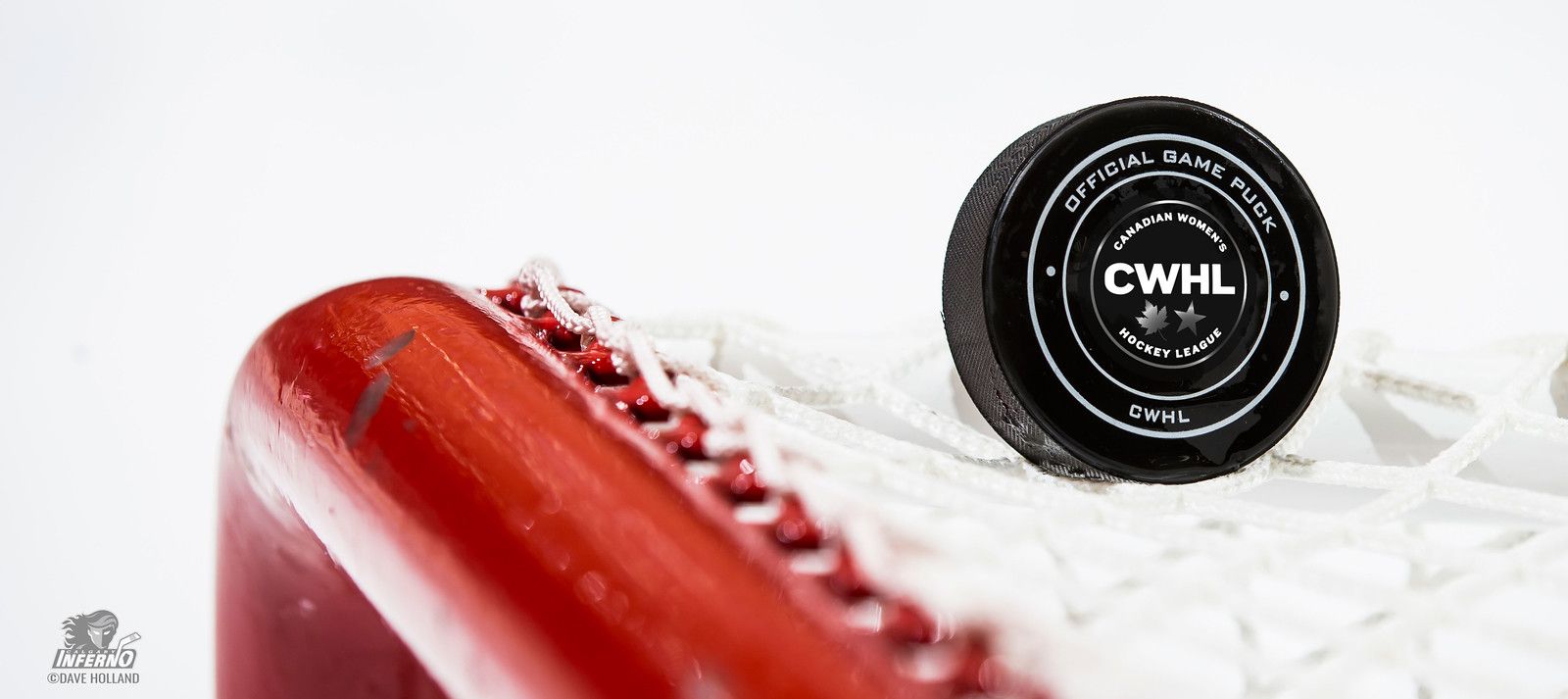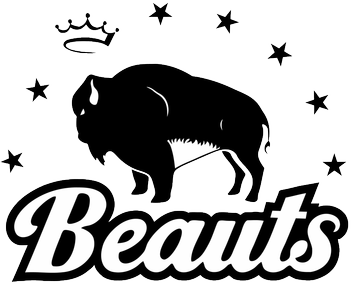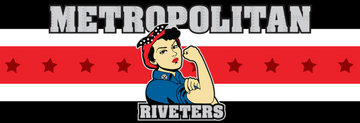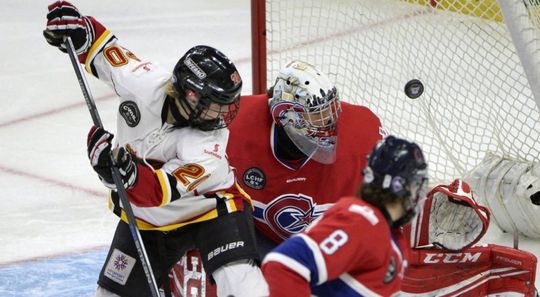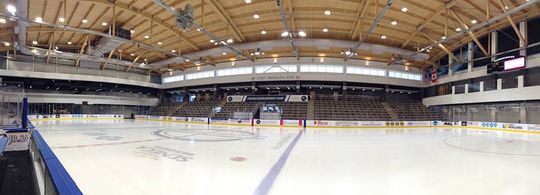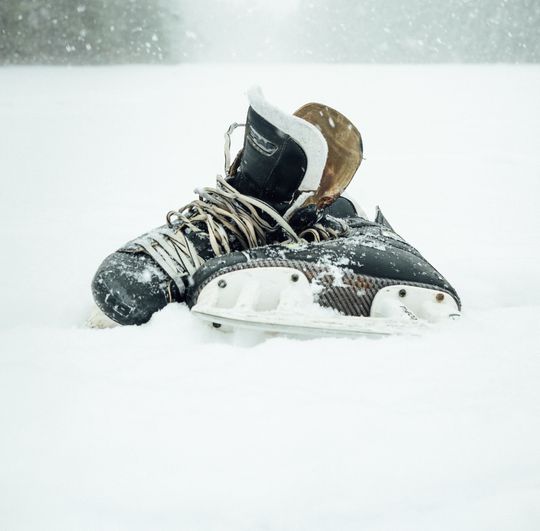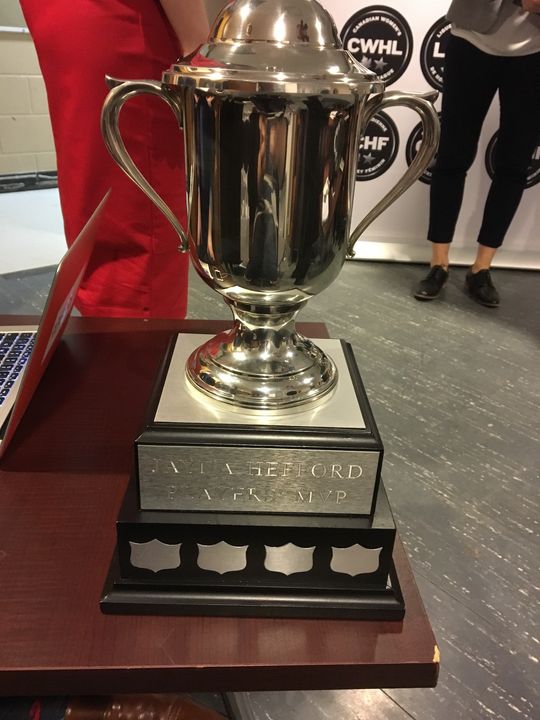The 2017-18 season marked several milestones for the CWHL. Between the addition of two teams based in China, the relocation of a founding franchise, and the introduction of player compensation, the league entered its second decade with some major changes. Combine those with the attention lapse and subsequent attention boost typical of an Olympic year, along with unprecedented levels of parity, and 2017-18 offered plenty to reflect on and to build from.
Teams in Brief
Les Canadiennes de Montréal
Montreal was widely expected to cruise through the Olympic year, thanks to a strong core of returning players and the addition of goaltender Emerance Maschmeyer. Les Canadiennes didn't quite dominate and showed some flashes of inconsistent play, but they still managed to clinch the league's top spot -- and the Chairman's Trophy -- in the final weekend of the regular season. However, that momentum didn't carry through to the playoffs, where fluctuating lineups seemed to disrupt the team's chemistry, as they were swept in two games by a very strong Markham squad.
The lack of consistency and the failure to create successful line adjustments late in the year opens questions about Montreal's coaching and whether it's time for a change. It's hard to look at the team's reaction to their playoff loss and believe that they "just didn't want it enough"; if every loss is being blamed on an attitude problem, it's worth asking where that stems from.
General manager Meg Hewings said that she expects to see a lot of player movement throughout the league this offseason. It wouldn't be a shock to see some more big names land in Montreal, but with that, there will likely also be some departures and/or retirements.
Off the ice, Les Canadiennes exceeded all of their targets, from attendance to charity fundraising, and continue to lead the league in that regard. Hewings noted that the setup in Shenzhen provided a great opportunity to see other successful facilities and sparked ideas for how Montreal can continue to improve. She also spoke of the potential for offseason fundraising events, which are something that other teams have done but that haven't yet been possible in Montreal.
Kunlun Red Star
After an impressive first-year showing, the biggest question for the Red Star is what the team will look like next season. Will the ambassador roles remain similar to this year? Will the number be the same? Who will they be?
There are also a handful of players who will be graduating out of Kunlun's Eastern Women's Hockey Conference junior program, as well as those in Qiqihar who may wish (and perhaps finally be able) to transfer for a better chance at remaining in the national team pool. Whether those potential additions will result in more Chinese players on the roster or in cuts will be interesting to see.
For returning players, their roles within the team should gradually change as younger Chinese nationals gain experience and begin to take on more responsibility. Whether Kunlun can repeat its strong performance will have a lot to do with which import players come back and how any gaps are filled.
Calgary Inferno
The Inferno posted a solid record despite a lot of roster turnover this season, after losing 14 players to either the Olympics or the disappointment of not making the Olympics. The biggest question going forward is who will return. A significant portion of the team's Canadian Olympians are non-local to Alberta, and chose to settle in Calgary specifically because it's Hockey's Canada's training base. With the next Olympics four years away, some may now elect to play elsewhere. Japanese Olympian Akane Hosoyamada grew up in nearby Banff and may be more likely to return to the area, but teammate Aina Takeuchi is another player who will be worth looking for.
The Inferno are also guaranteed to lose young forwards Sophie Shirley and Kennedy Brown, who are beginning their university careers. Shirley played a huge role this year -- between her and any non-returning national team players, Calgary may have some serious holes to fill. Their 2017-18 performance shows promise that they can perform without all the big names, but with the league's increased parity, depth will prove important.
Markham Thunder
The Thunder have had the pieces in place for a while, but they finally put it all together this year. Every player was quick to talk about the team chemistry and the atmosphere in the room, but after a major championship, there's always the question of retirements. Some of Markham's players have been around for several years, and might choose to end their careers on the high note of winning the Clarkson Cup. Still, the Thunder should retain most of their core. First-year head coach Jim Jackson and his staff seemed to bring out the best in this group, so barring outside circumstances, they'll likely return to build off of this season's success.
After relocating from Brampton to Markham last summer, the Thunder have been working with the city to entrench themselves in the local community. That process should continue through the offseason and will be crucial to building the kind of home-grown fanbase that exists in Montreal. The Thunder probably have the best chance of any team to achieve that, especially with a municipality that's standing behind them.
Vanke Rays
After a mostly solid debut season that was interspersed with some blow-out losses, the questions for Vanke are similar to those facing Kunlun: what will the ambassador role look like and who will the ambassadors be?
Defense was a weak spot at times this season and they often relied on converted forwards, with varying degrees of success. As a home to many of China's younger players, Vanke might be particularly interested in those coming out of the junior ranks. The Rays also hosted the best Chinese forwards last season, and if that continues, they can look forward to drafting Pi Yunlin, who captained China's U18 national team this year and has shown promise at senior Worlds.
Toronto Furies
The Furies struggled this year, but managed a few upsets towards the end of the season. First-year coach Jeff Flanagan earned a Coach of the Year nomination for his efforts behind the bench. He was commuting from out of town, though, and former head coach Sommer West had previously indicated a desire to eventually return to the team or league in some capacity, so it's unclear whether Flanagan will remain for a second season.
Toronto acquired Montreal's 2018 first- and third-round draft picks in the Erin Ambrose trade, and with a strong class of graduating seniors this year, those could prove crucial in restoring the team's top end. A number of Calgary's Canadian Olympians have Ontario connections, too, so it's possible that the Furies could benefit if any of them decide to relocate.
Boston Blades
It may not have shown in the win-loss record, but Boston was a much-improved team this year. The Blades gave a number of top contenders some scares, and generally held opponents to tighter scorelines than in the past. Kacy Ambroz took over as head coach in December, and the team seemed to immediately show progress under her leadership. With strong recruiting and coaching as well as minimal core turnover, Boston should continue to grow through next year.
The Blades played out of Winthrop, Massachusetts this season, which made games difficult to get to from Boston. There has been an effort to integrate the team within the local community, but committing to an inaccessible suburb is a risk. Finding ice time has been a struggle for the Blades, so securing a home rink with full amenities that's close to public transit would be a big boost to a franchise that's slowly rebuilding the base it lost three years ago.
Looking Ahead
Brenda Andress said she expects a fairly calm offseason, with a focus on ironing out some of the issues encountered during the year (and "maybe a bit of vodka"). Most notably, the league intends to work with the CWHLPA to improve logistics around travel to China and the game schedules within those trips. Andress noted that the league's relationship with the players' association is at a good working point, and that the PA's increased public presence has challenged the league to improve. One area to keep an eye on this offseason is pay, as the league has stated that its intention is to annually increase player compensation.
This will mark the first full year of general managers occupying the role full-time, which Hewings explained is essential to providing stability and building a committed staff and volunteer network. That, in turn, creates the foundation for teams to develop a strong community presence and a dedicated fanbase. It should also improve roster construction, as GMs will have more time and energy to prepare for the draft.
There's also talk of the league potentially instituting open recruitment camps in various locations this offseason. It's unclear whether these would target free agents or draft-eligible athletes (or both), but it would help teams better fill their rosters in an environment where scouting opportunities remain limited. Allowing players the opportunity to be seen ahead of the draft might also ensure that they wind up in places where they have the best possible chance of earning roster spots, rather than showing up to training camps for teams that can't use them.
And of course, the major question lingering over the offseason remains: What will the North American women's hockey landscape look like come October, anyway?
(Photo credit: Dave Holland/CWHL)
